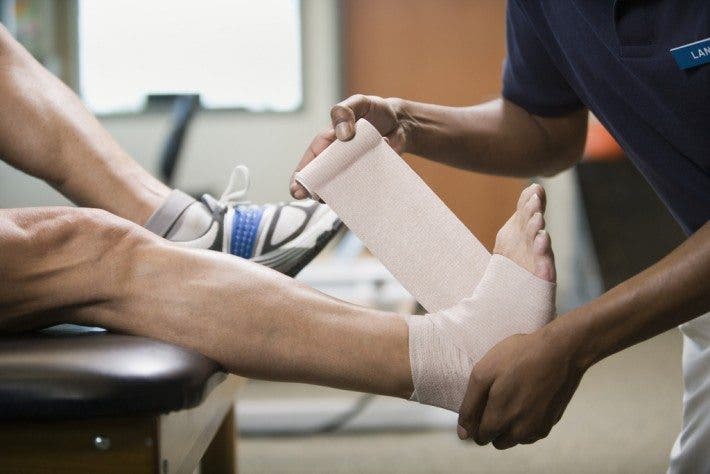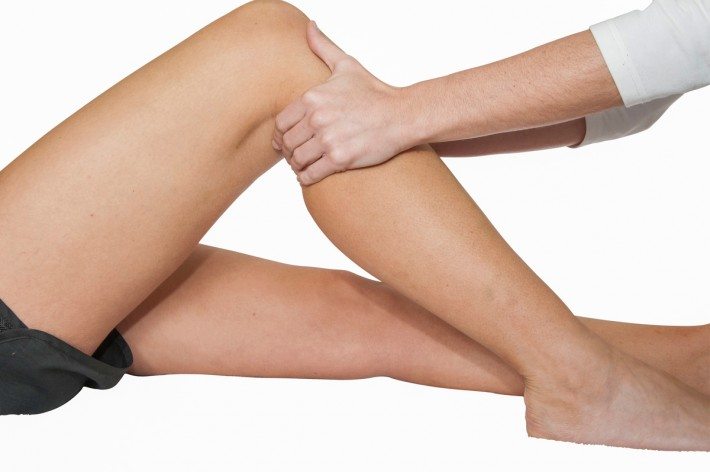Running has recently become one of the most popular physical activities due to how easy it is to practice and the benefits it brings. However, running is a high-impact activity and we are more likely to be injured if the following factors are met:
- Excessive amount of km.
- Not heating properly.
- Using improper running technique.
- Inappropriate footwear for the race.
- Running on unstable surfaces.
- Anatomical imbalances.
Some of the most common ailments are plantar fasciitis, periostitis, and inflammation of the Achilles tendon. These ailments can appear without warning and remain with us for a long time. The first thing you should do when the pain is difficult to bear is to go to the doctor or the physiotherapist: he better than anyone will know how to diagnose what injury you have and what treatment you should follow.
However, we can give you some advice depending on the injury you suffer so that you can complement the treatment recommended by the specialists and your recovery is better and faster.
1. Runner’s knee
To cure it, experts suggest:
- Reduce the number of kms.
- Wear knee pads .
- Take anti-inflammatories .
In more serious cases, it is convenient that you go to the doctor so that the synovial fluid accumulated in the knee can be extracted (Arroll and Edwards, 1999).
2. Achilles tendinopathy
In case the pain is difficult to bear it is recommended:
- Take anti-inflammatories.
- Take rest.
- Put ice on the affected area for no more than 20-30 minutes every hour.
- Bandage the affected area to reduce inflammation and stabilize injured tissues.
- Elevate the affected foot since by decreasing the blood flow in the area you can lower the inflammation.
When you find something better for running, stretch your calves well after each session.

3. Plantar fasciitis
- Keep rest
- Try doing heel stretching exercises with the help of a tennis ball.
If the problem persists:
- Go to the podiatrist to make templates perfectly molded to you.
- Put on a splint at night to stabilize the area.
- You see the doctor to give the area a steroid injection to speed up recovery.
4. Tibial periostitis
- Ice your pimples for 15-20 minutes.
- Keep the pimples raised at night.
5. Iliotibial band syndrome
Do targeted stretches and exercise with a foam roll to reduce inflammation and pain.
6. Stress fracture
- Take some time off as you may need to carry crutches to avoid adding pressure to the area as well as a good physical therapy treatment.
- An X-ray will allow you to see if it is necessary to undergo surgery to repair the fracture.
- Get enough calcium to keep your bones strong.
7. Patellar tendinopathy
- Put ice on the knee whenever pain appears.
- Follow a physical therapy treatment that allows you to relieve and strengthen the tendon.
- While stretching quadriceps femoris both in the gym at home.

8. Ankle sprain
- Go to a doctor to tell you exactly how long you should be without training.
- Do balance exercises that work the stabilizer muscles of the ankle such as single leg squats (McKeon et al., 2008).
- Wear an ankle brace and bandage your ankle when you return to workouts to prevent relapse.
9. Muscle strain
- Keep rest.
- do a stretching treatment.
- Put ice on the affected muscle.
10. Blisters
- Make sure your sneakers fit the size of your foot.
- Avoid cotton socks. Instead, use socks made of synthetic material.
11. Chafing
- Wear longer pants for running.
- Use balms to avoid further irritation.
- Work your running style to avoid thigh-to-thigh rubbing.
12. Flatus
- Bend forward slightly and tighten your abs .
- Try to breathe more with pursed lips to reduce pain.
conclusion
We have provided you with some tips to be able to treat the most common running injuries one by one. However, we must do everything in our power to prevent any type of injury in running, and that the treatment of these can be expensive and long, so it is recommended that you know the main causes why they can appear like this as the best measures to avoid injury.
References
- Arroll, B. and Edwards, A. (1999). Runner’s knee: what is it and what helps? British Journal of General Practice.
- McKeon, PO, Ingersoll, CD, Kerrigan, DC, Saliba, E., Bennet, BC and Hertel, J. (2008). Balance training improves function and postural control in those with chronic ankle instability. Medicine and Science in Sports and Exercise, 40 (10) . doi: 10.1249 / MSS.0b013e31817e0f92.
- Schwecherl, L. (2015). The Most Common Running Injuries and How to Avoid Them. For Greatist.com [Revised September 2015].